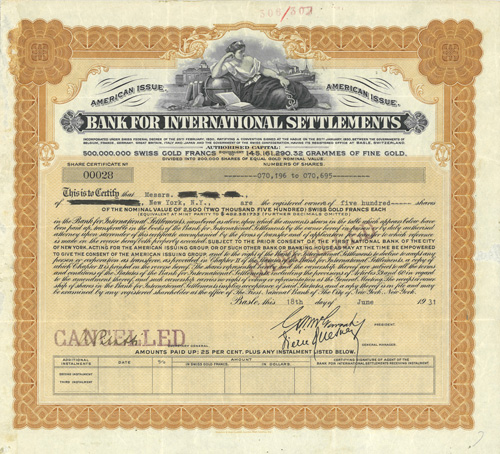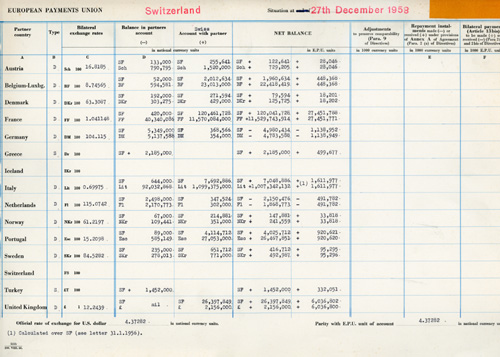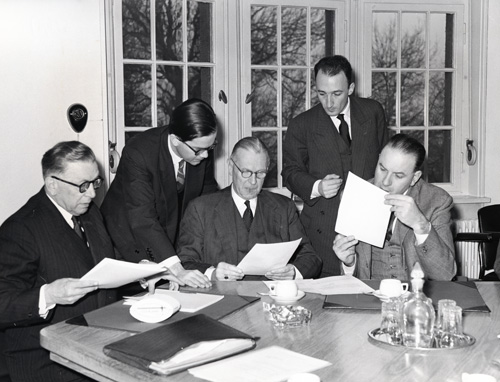A bank for central banks
The BIS was created as an international organisation, and also as a bank. As a bank, its clients are exclusively central banks and other international organisations. The BIS provides reserves management services to its clients. Historically, it has also played a role in providing liquidity in times of financial crisis.
1930 – 1939

Bank for International Settlements shares certificate, American issue, 1931.
1939 – 1945

The steamship SS Normandie enters the port of New York in the 1930s. In the late 1930s, ocean liners like this one regularly transported central bank gold from Europe to the safety of the United States at the behest of the BIS. (photo © - Keystone)
1946 – 1958

Monthly overview summarising Switzerland's balance of payments position vis-à-vis other EPU member states, December 1958. The BIS provided accounting services to the EPU and acted as its agent.
1958 – 1973

Signature of a BEF 100 million loan agreement on behalf of the European Coal and Steel Community (ECSC), 20 December 1957. The BIS acted as bank agent and depositary for a number of ECSC loans, thereby fulfilling its statutory object of acting as
1973 – 1993

In the late 1980s, the BIS inaugurated a state-of-the-art banking dealing room to better serve its central bank customers.
1999 – 2022

Staff members working in the BIS dealing room. There are dealing rooms in Basel as well as in the Representative Offices in Hong Kong SAR and Mexico City.
